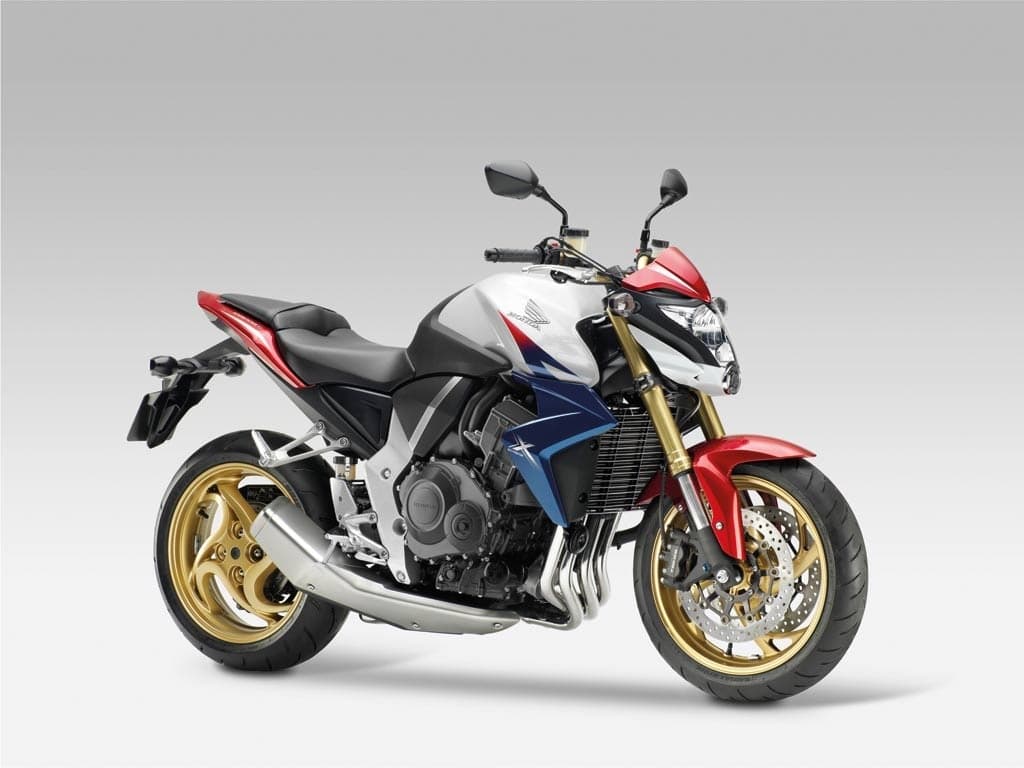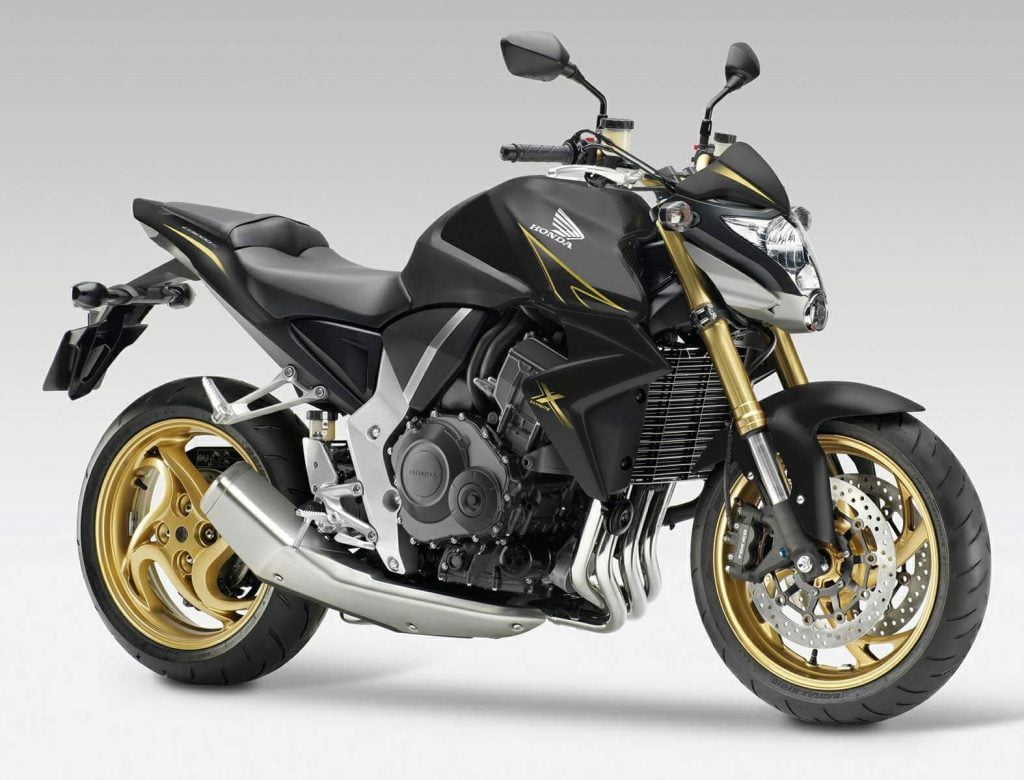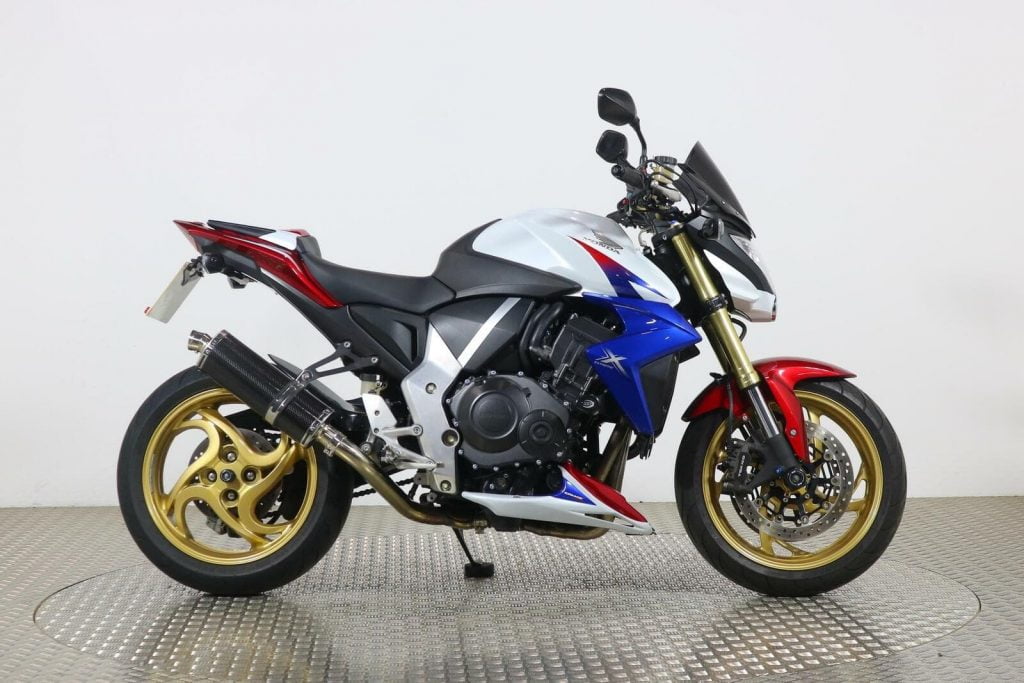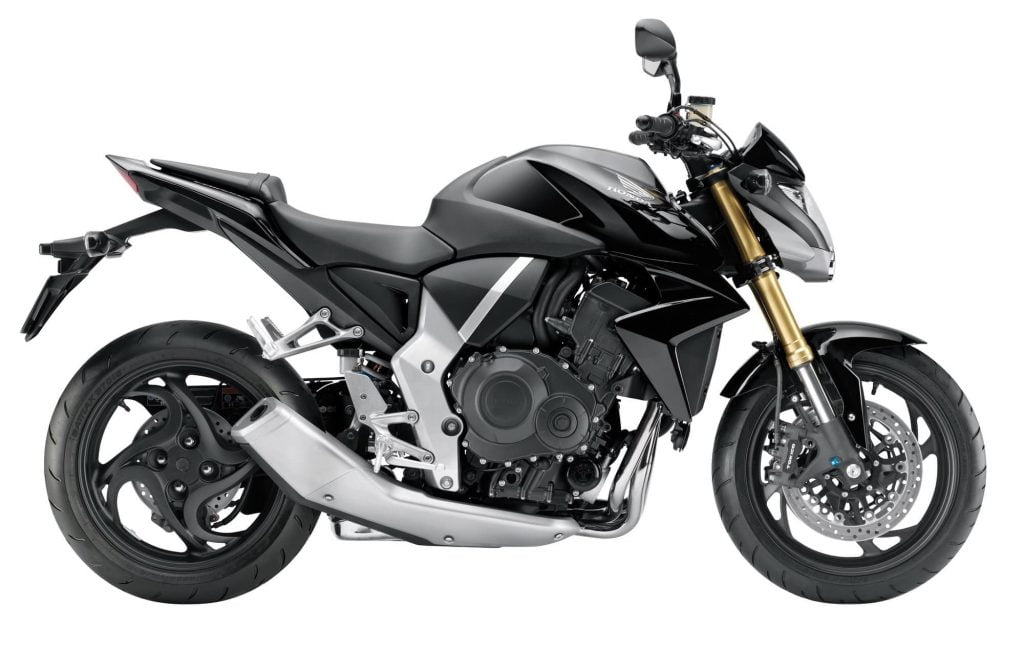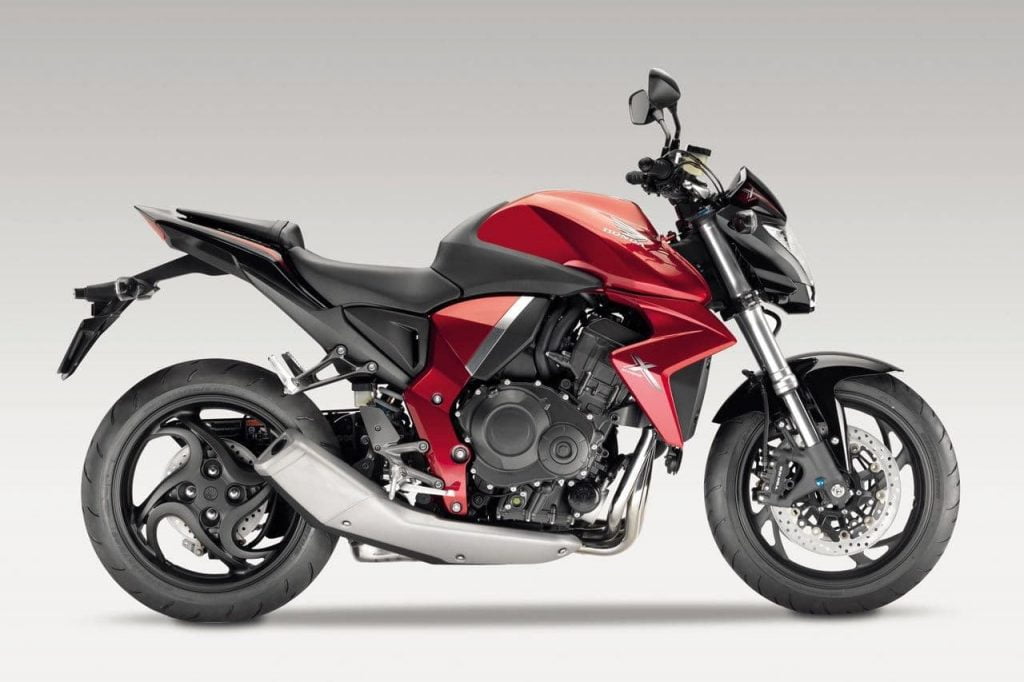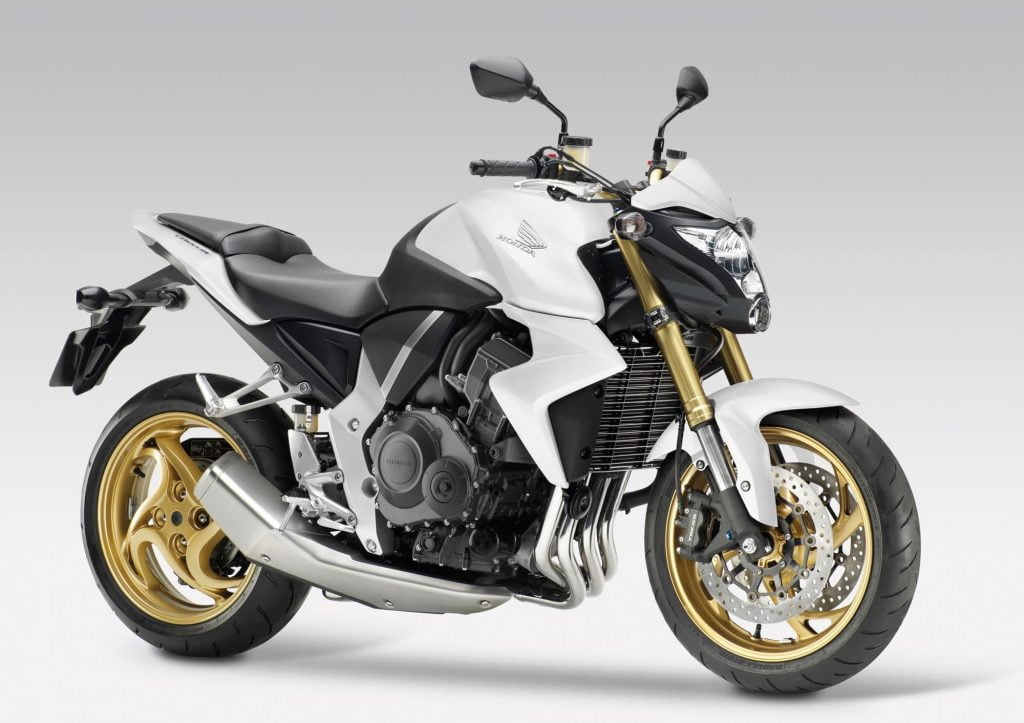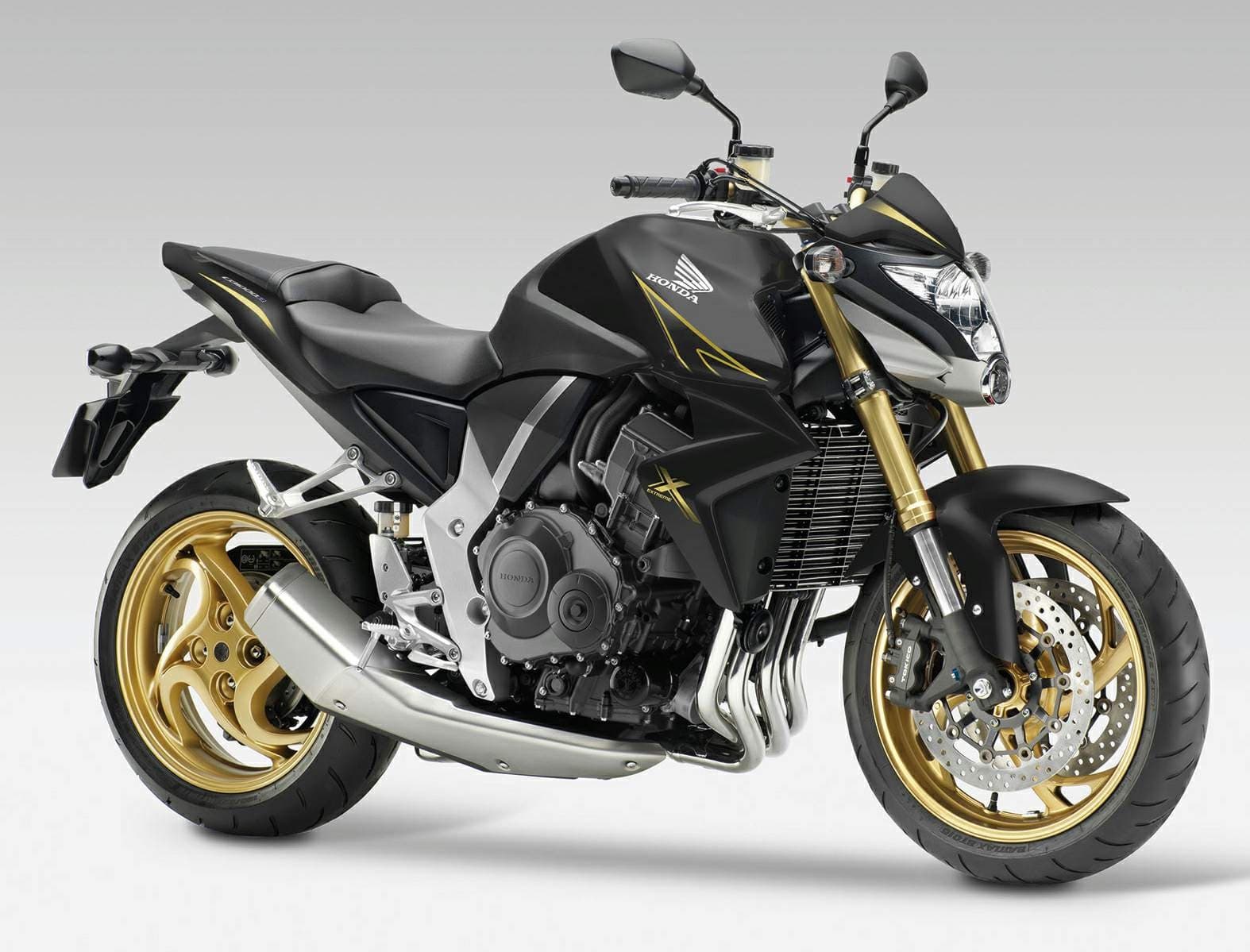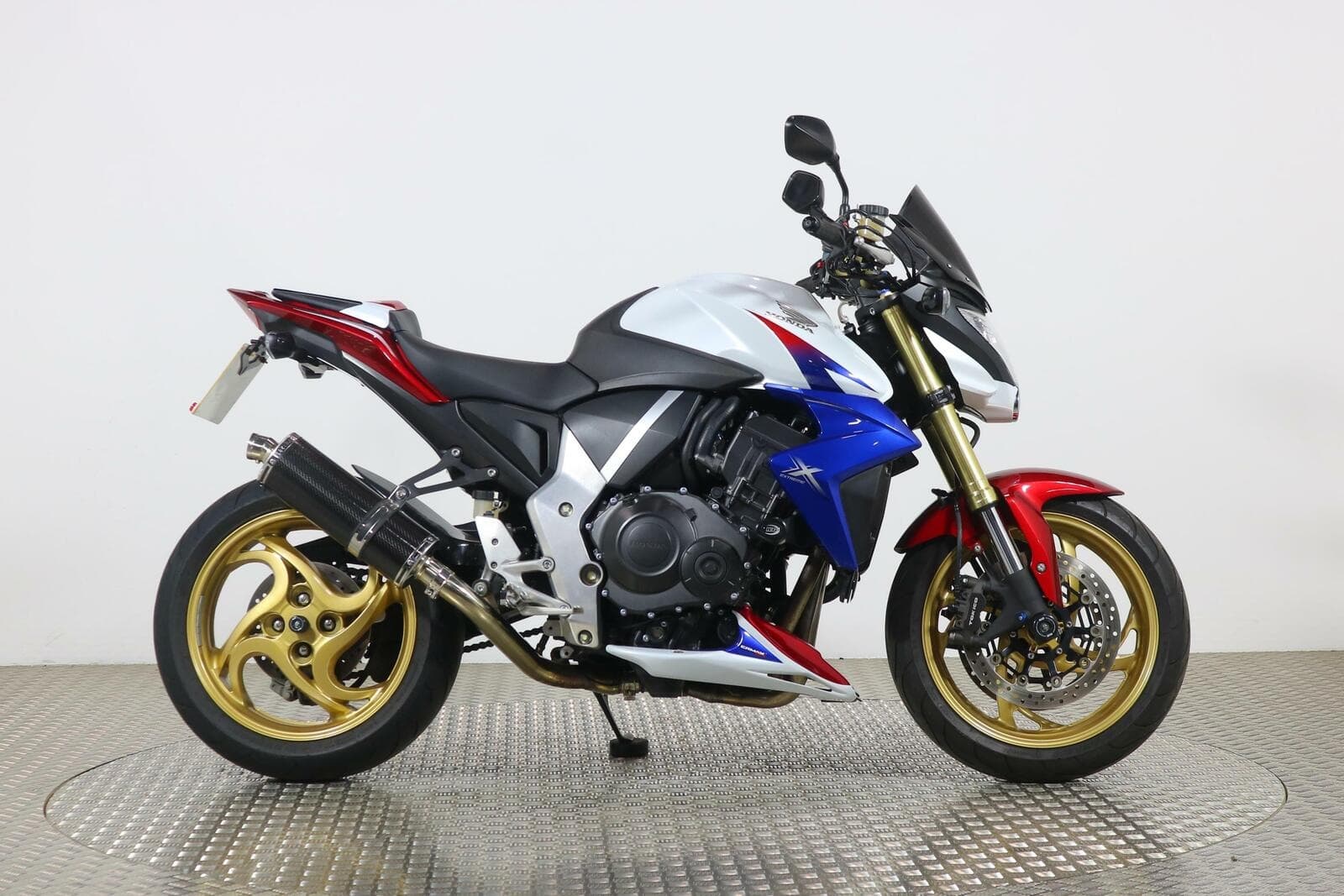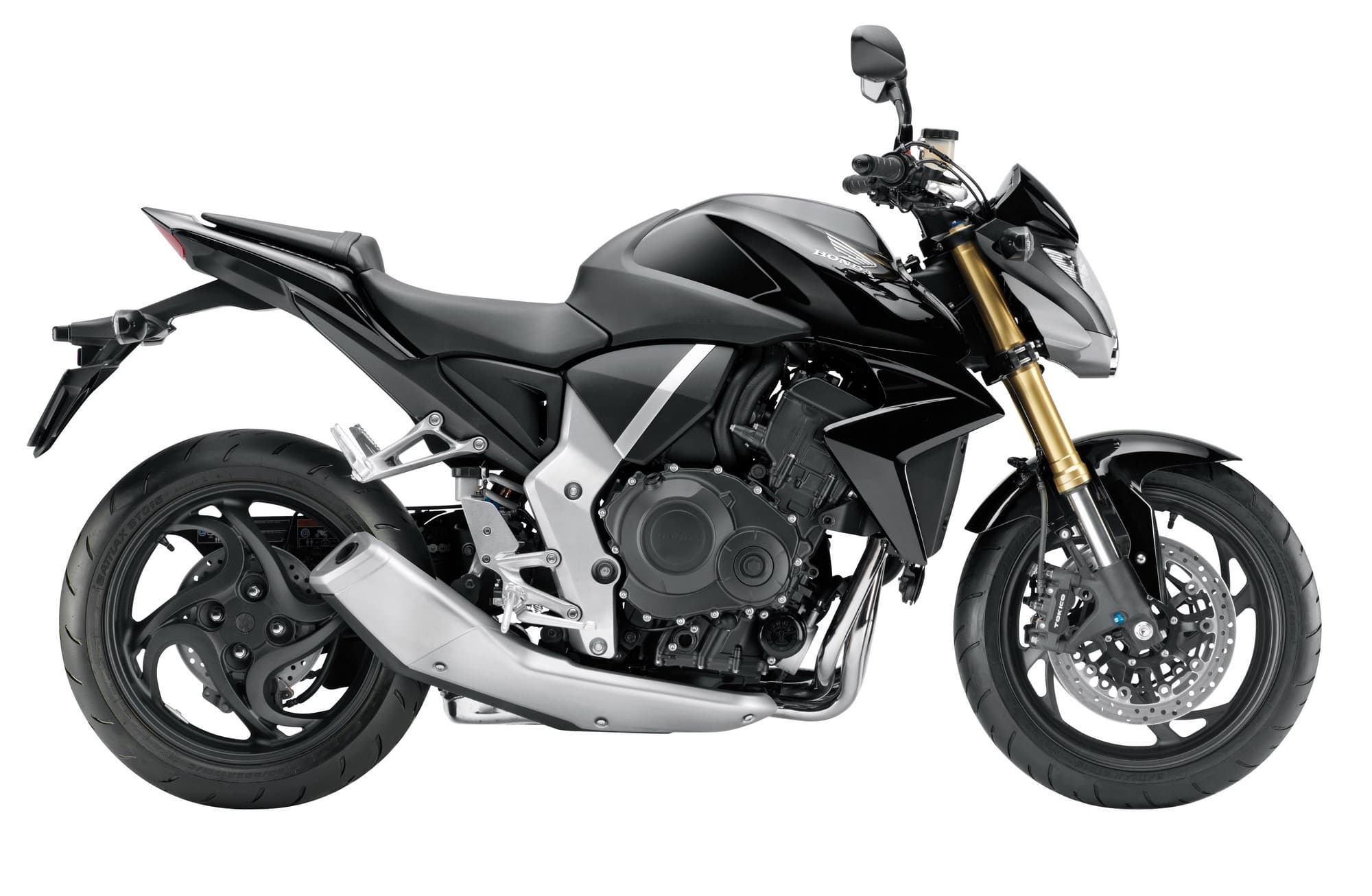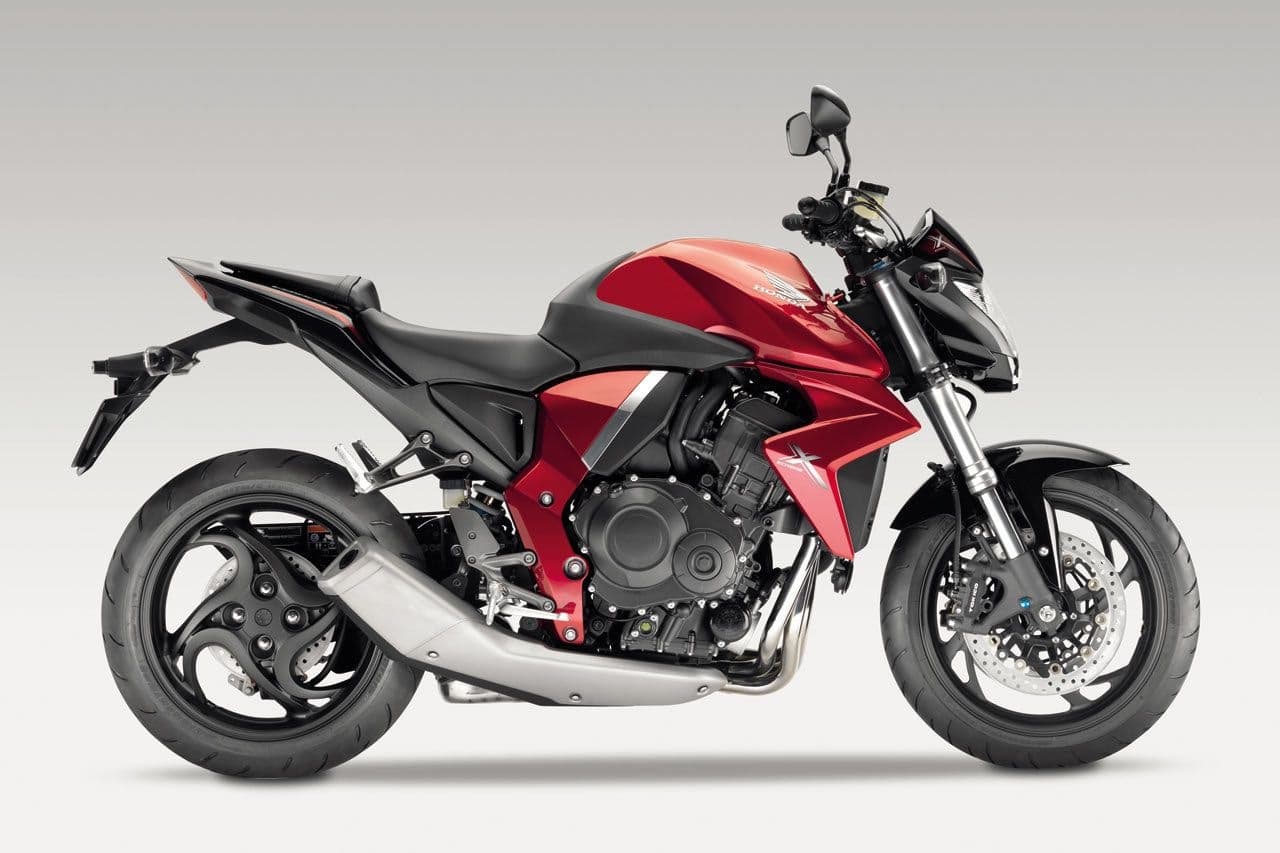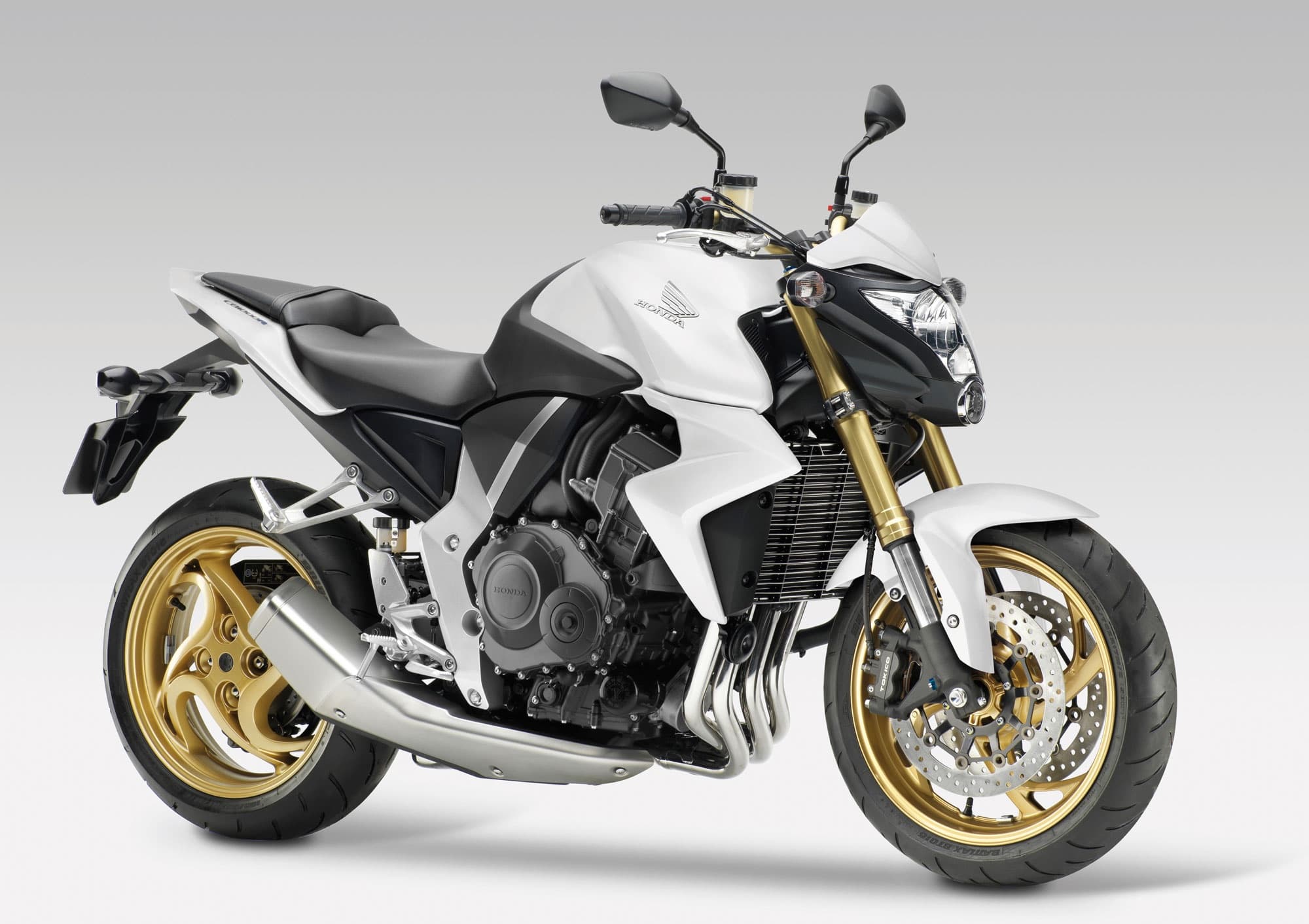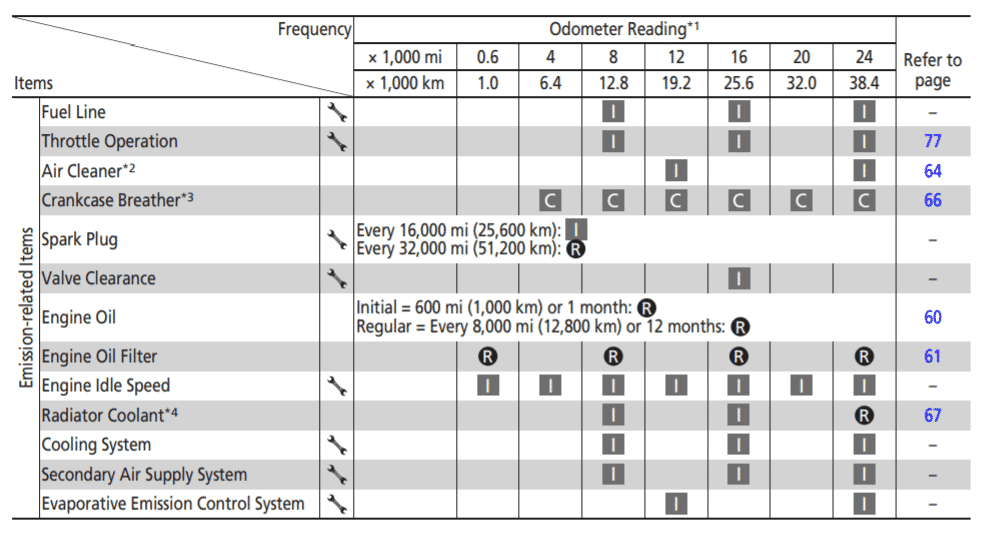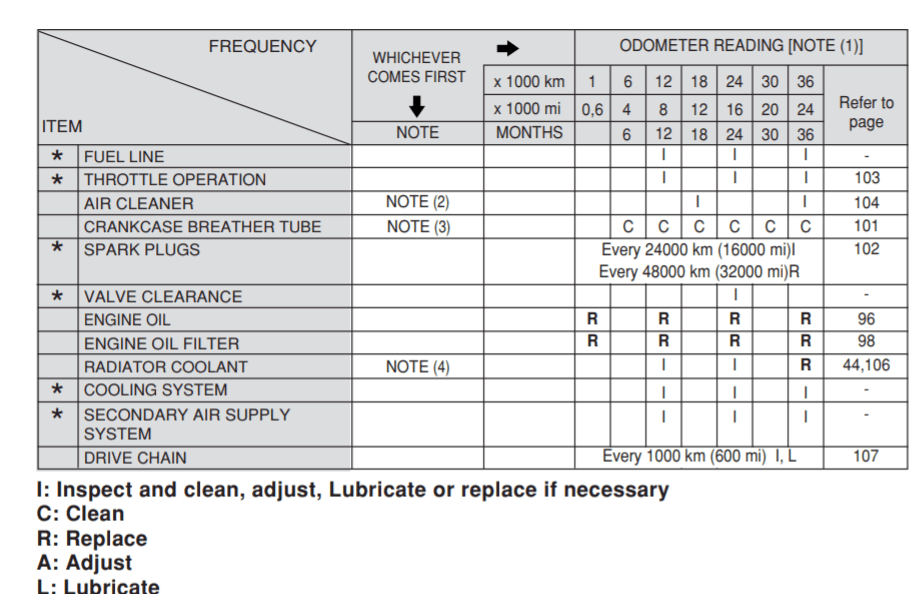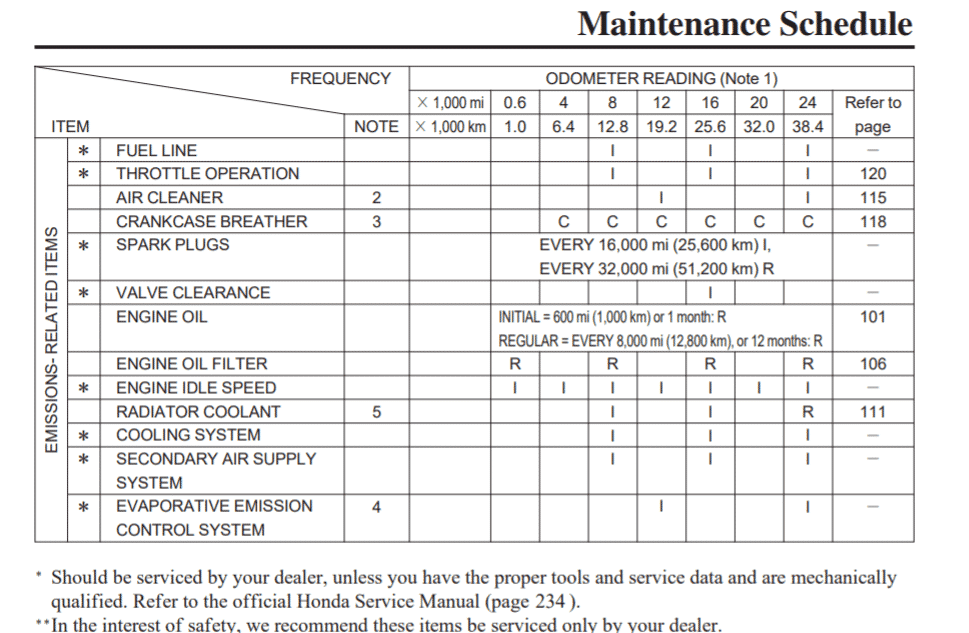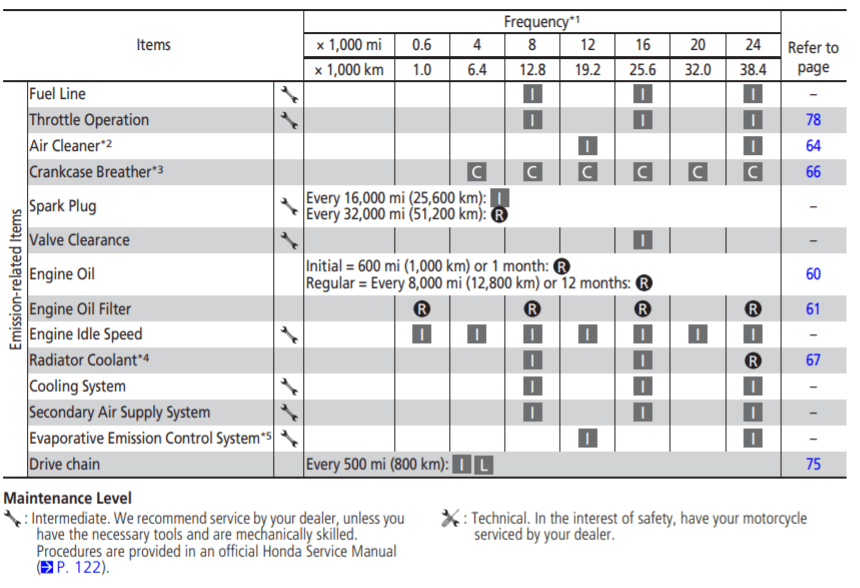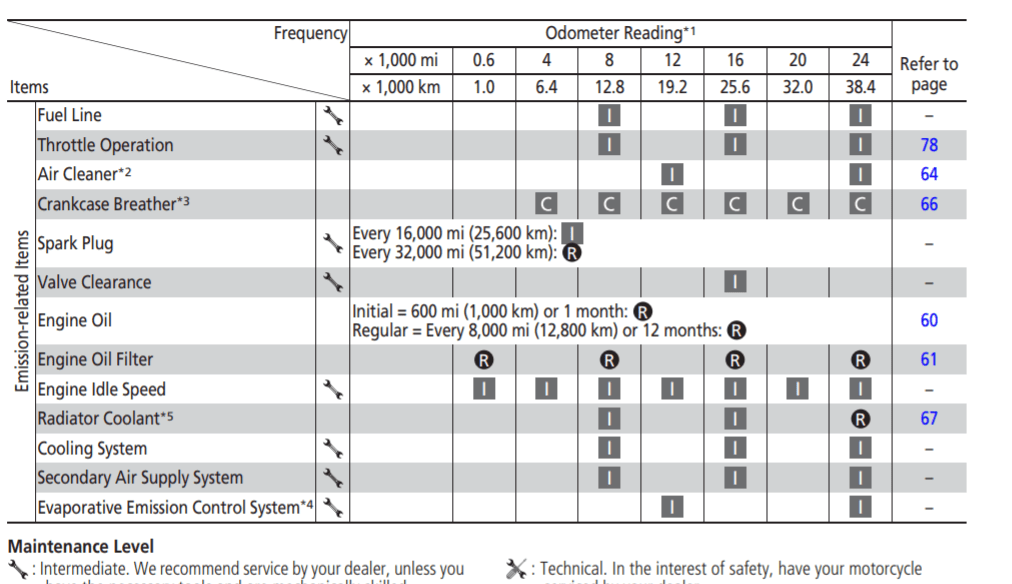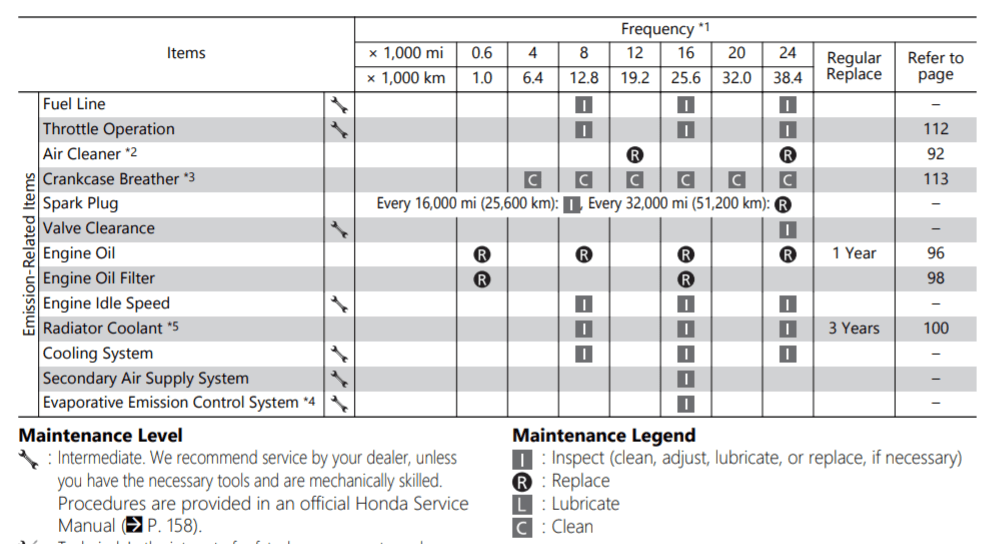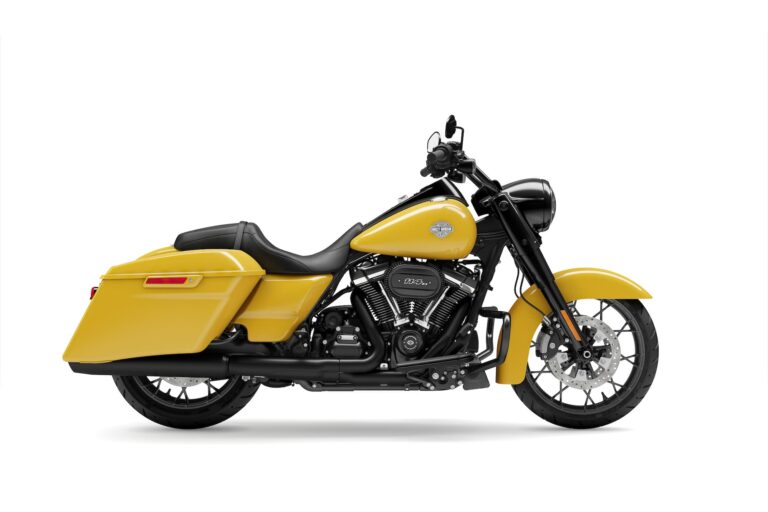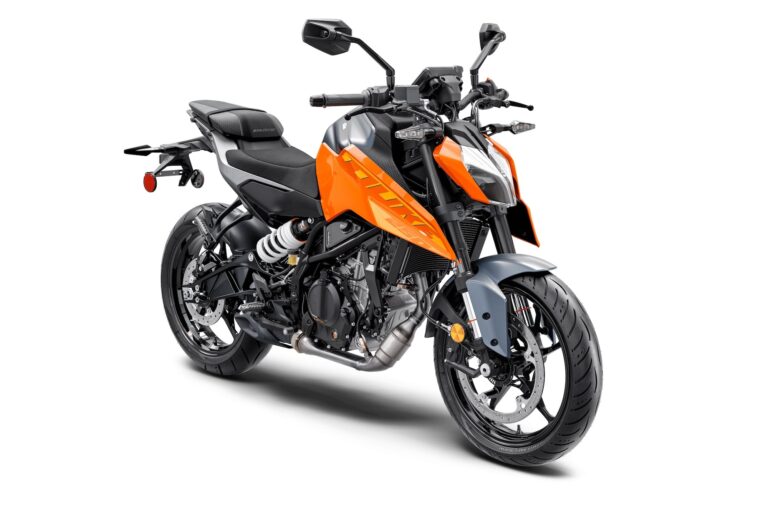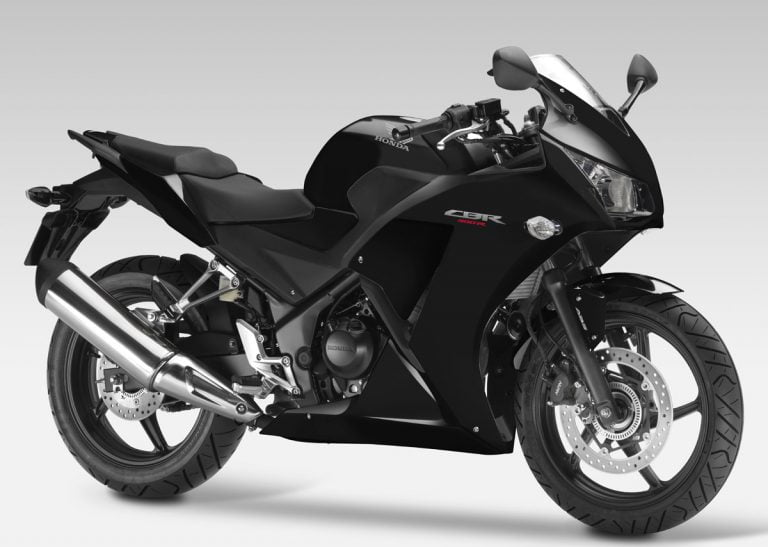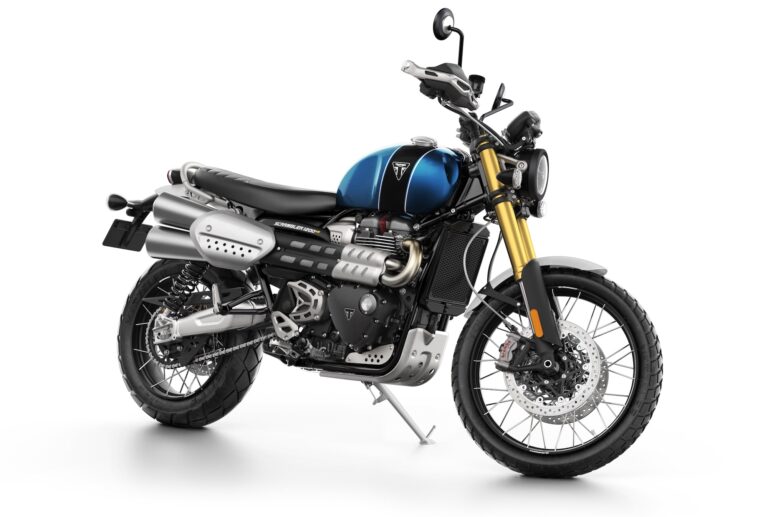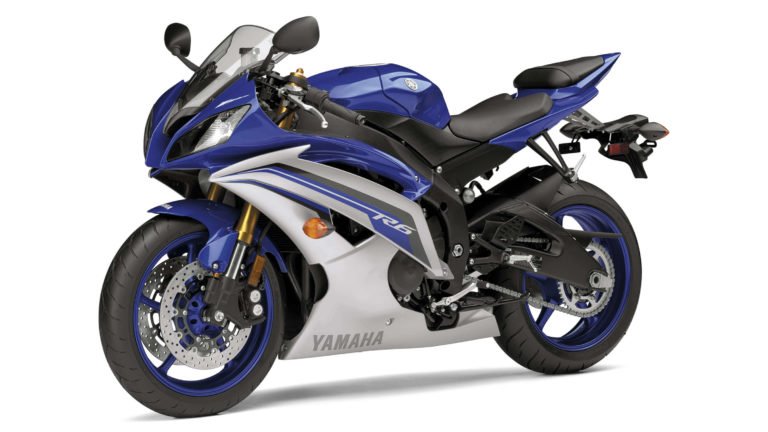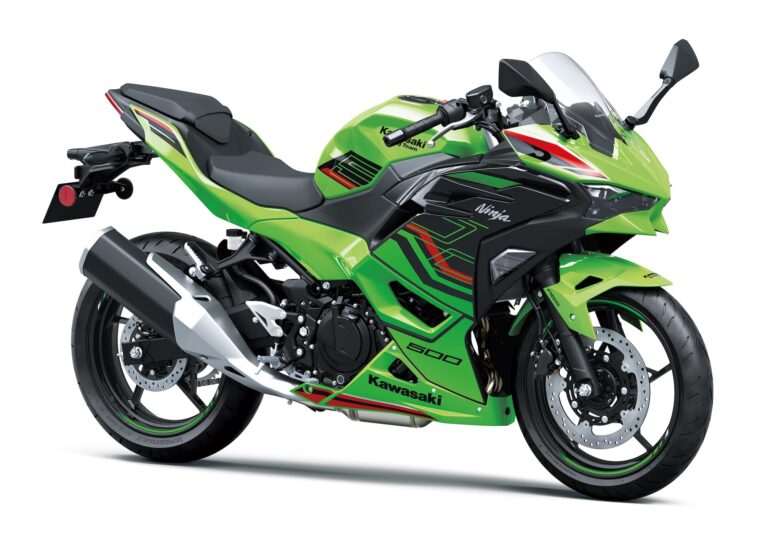Honda CB1000R First Gen (2008-2016) Maintenance Schedule and Service Intervals
This is the maintenance schedule and associated service intervals for the first gen Honda CB1000R, made from 2008-2016 (with model years from 2009 onward). Some were released as a 2017 CB1000R, but model years only went up to 2016 in most markets, with 2017 skipped before the new 2018 version took its place.
The Honda CB1000R was a big change from the early CB900 919 Hornet, but follows the same spirit as being an upright standard that’s easy to ride.
The 2009 Honda CB1000R had the following changes from its earlier sibling:
- Bigger engine — now a 998cc engine, from the previous generation 2006-7 Honda CBR1000RR
- A modified CB600 Hornet chassis with an aluminium backbone for rigidity
- Strong suspension — an inverted 43mm cartridge-type fork with full adjustability (preload, compression, and rebound).
- Different aesthetics — a “streetfighter” style front light
- Single-sided swing-arm
- Digital display
- Optional ABS (standard in some markets)
In 2018, Honda released its restyled CB1000R, the “Neo Sports” version with a round front headlight.
This site has links for things like oil and spark plugs from which we earn a commission (which unfortunately nobody can save, not even us). If you appreciate this work, then please use those links. Thanks!
Service Intervals for the Honda CB1000R 1st gen
The main oil change interval for the 1st gen CB1000R is 8000 miles or 12000 km or every year, whichever comes sooner.
Honda only requires infrequent valve services and spark plug inspections — every 16000 miles / 24000 km, or two oil changes (but with no time interval).
The CB is a liquid-cooled bike, so make sure you keep the coolant fresh, replacing it on schedule.
Finally, make sure you replace the brake fluid every two years. The CB has a hydraulic clutch, too, so replace the clutch fluid at the same time.
What you need to service the Honda CB1000R 1st Gen
If you want to service your Honda CB1000R (and why not! It’s a naked bike, so it’s pretty easy to get to all the main parts), then apart from basic motorcycle maintenance tools, you need the following parts/consumables.
The parts list is nearly identical to the revised 2nd gen Neo Sports café CB1000R, but there are a couple of differences, like in air filter and brake pads.
| Part | Honda CB1000R spec |
|---|---|
| Oil | Honda specifies the oil should exceed JASO T 903 standard MA, or API classification SG. They recommend Pro Honda GN4 10W-30. |
| Oil filter | Honda’s standard part number for the oil filter is 15410-MCJ-505 (used on many Hondas). You can also use Hiflofiltro HF204RC for the oil filter. Use a torque wrench to tighten it to 26 Nm (19 lb-ft). |
| Air filter | The OEM air filter part is 17210-MFN-D02. You can also use the K&N alternative air filter, whose part number is HA-1009, which is often more available. |
| Spark plugs | Use NGK spark plug part IMR9E-9HES. Use a gapping tool to set the gap to 0.8-0.9 mm. |
| Chain maintenance | To maintain your chain, Motul chain paste is quite well-liked. There’s also the Motul chain care kit which is affordable and good. |
| Brake fluid & Clutch fluid | You can use any DOT 4 oil, but Honda recommends Honda DOT 4. |
| Brake pads (front) | Use EBC double-hardened front brake pads with part number FA390HH (you need 2 pairs) (they’re a popular upgrade… less fade, more bite, and they’re cheaper). |
| Brake pads (rear) | Use EBC double-hardened brake pads with part number FA488HH. |
| Coolant | Use Honda Long-life Coolant, which is based on ethylene glycol. |
| Grease | Stock up on lithium soap-based grease and silicon grease to keep pivots and moving parts lubricated and protected. |
Honda CB1000R Maintenance Schedule
Below is the maintenance schedule for the Honda CB1000R.
Notes:
- Honda recommends you get a mechanic to service wheels and steering bearings, but says everything else can be done by a competent home mechanic
- At higher odometer readings, repeat the maintenance schedule in the pattern shown.
- The break-in schedule is no longer shown.
- Some items should be serviced on a time- or distance basis (e.g. engine oil). Follow the earlier of the two.
Maintenance Procedures:
- I: Inspect and clean, adjust, lubricate, or replace, if necessary
- R: Replace
- L: Lubricate
- C: Clean
mi x 1000 | 4 | 8 | 12 | 16 | 20 | 24 | |
|---|---|---|---|---|---|---|---|
| km x 1000 | 6 | 12 | 18 | 24 | 30 | 36 | Every |
| Engine Oil (Pro Honda GN4 10W-30) | R | R | R | Replace every year | |||
| Engine Oil Filter (HF204RC) | R | R | R | ||||
| Air Cleaner (K&N HA-1009) | I | I | Replace more often if riding in dusty/wet conditions | ||||
| Spark Plug (NGK IMR9E-9HES) | I | Replace every 32000 mi / 48000 km | |||||
| Valve Clearance | I | ||||||
| Fuel Line | I | I | I | ||||
| Throttle Operation | I | I | I | ||||
| Engine Idle Speed | I | I | I | I | I | I | |
| Radiator Coolant (Honda Long-life Coolant) | I | I | R | Replace every 2 years | |||
| Cooling System | I | I | I | ||||
| Secondary Air Supply System | I | I | I | ||||
| Crankcase Breather | C | C | C | C | C | C | Replace more often if riding in rain or at full throttle |
| Evaporative Emission Control System | I | I | |||||
| Brake Fluid (Honda DOT 4) | I | I | R | I | I | R | Replace every 2 years |
| Brake Pads Wear (2 x FA390HH, 1 x FA488HH) | I | I | I | I | I | I | |
| Brake System | I | I | I | ||||
| Brake Light Switch | I | I | I | ||||
| Headlight Aim | I | I | I | ||||
| Clutch System | I | I | I | ||||
| Clutch Fluid (Honda DOT 4) | I | I | R | I | I | R | Replace every 2 years |
| Side Stand | I | I | I | ||||
| Suspension | I | I | I | ||||
| Nuts, Bolts, Fasteners | I | I | I | ||||
| Wheels/Tires | I | I | I | ||||
| Steering Head Bearings | I | I | I |
Maintaining Your Chain on the Honda CB1000R (1st gen)
It’s important to maintain your chain on the Honda CB1000R (1st gen), as on any chain-driven motorcycle. Use a good-quality chain lubricant like Motul chain paste, or a Motul chain care kit which comes with a couple of handy tools to maintain the chain.
Honda recommends you follow the following chain maintenance schedule:
| Chain maintenance item | Every |
|---|---|
| Check drive chain lubrication condition, lubricating if necessary | 500 mi / 800 km |
| Check drive chain slack, adjusting if necessary | 500 mi / 800 km |
Notes:
- Do these items (checking/adjusting slack, and checking/applying lubrication) more often if you ride your CB1000R in dusty or rainy conditions.
- Always lubricate the chain after washing the motorcycle.
Tyre size and tyre pressure for the Honda CB1000R
The Honda CB1000R has the following tyre sizes. The manual also recommends one brand of tyres, and suggests the following tyre pressures.
| Tyre | Size | Brand(s) | Tyre pressure |
|---|---|---|---|
| Front | 120/70ZR17M/C (58W) | BRIDGESTONE BT015F RADIAL L | 36 psi (250 kPa) |
| Rear | 180/55ZR17M/C (73W) | BRIDGESTONE BT015R RADIAL L | 42 psi (290 kPa) |
About the Honda CB1000R
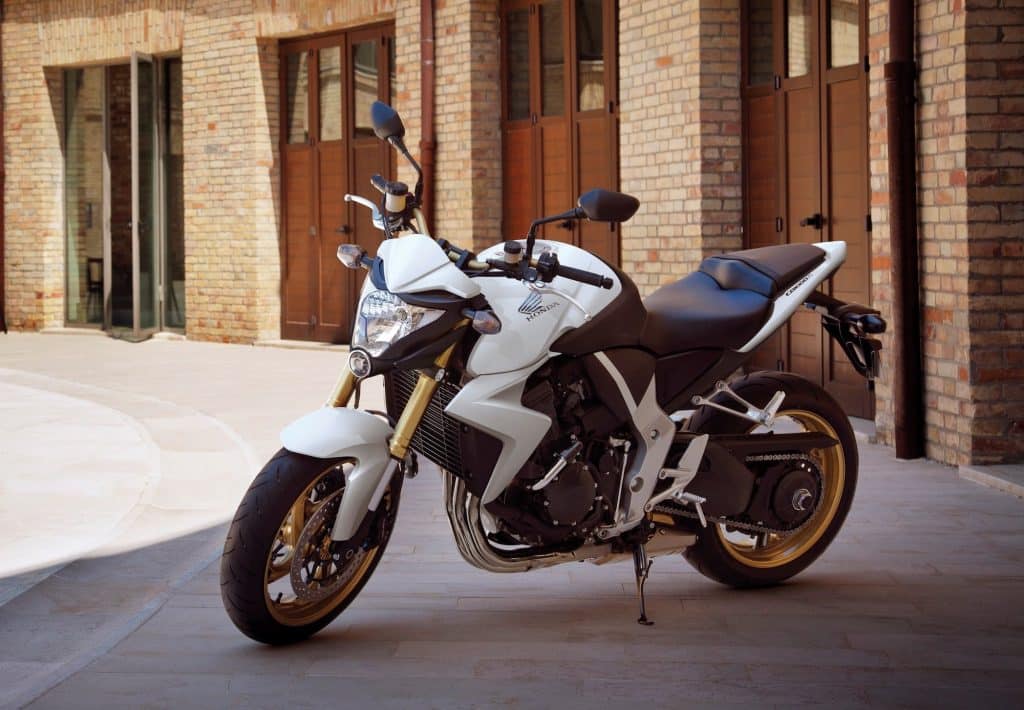
The Honda CB1000R is the model that replaced the previous gen CB900 “919” Hornet. It follows the same thread of being a naked roadster based on a superbike engine.
It’s essentially a superbike with an engine tuned for more midrange at the expense of top-end (which you won’t need, because you’ll be bathed in wind), handlebars, and less plastic.
But otherwise, the Honda CB1000R is still pretty much a superbike. From 2009 it had a 998cc four-cylinder engine that was fuel injected, water-cooled, and had twin overhead cams. It’s the same basic engine as the one from the previous generation Fireblade. Honda tends to use the same bore and stroke, but modifies the tuning through a different cam profile, exhaust/intake, and engine tune.
The CB1000R 1st gen’s engine makes around 90 kW (123 hp) at 10000 rpm, and 100 Nm (73 ft-lb) at 7500 rpm. That peak torque figure at a comparatively low RPM (compared to superbikes) means you don’t have to rev it to the moon to get it into the meat of the torque curve… though you probably will, anyway.
The CB1000R has a compact bikini cowl surrounding a multi-reflector headlight. Traditionalists don’t like the lack of a round headlight (something fixed in the 2018+ Honda CB1000R with its neo-retro design), but those who like the Japanese minimalist streetfighter aesthetic will love it.
Totally unique to the Honda CB1000R in its class (among Japanese rivals, anyway), is the single-sided swingarm. It looks great! In fact, this makes it the only inline four-cylinder roadster with the feature.
Honda didn’t go cheap on the suspension on the 1st gen Cb1000R. The suspension system is made up of a 43mm inverted HMAS cartridge-type front fork that’s as sturdy as it is responsive. The forks can be fully adjusted for preload, compression, and rebound damping, allowing riders to customise the bike’s riding performance.
And brakes are high-spec too — 310 mm floating disc brakes with radial-mounted 4-piston calipers.
The 1st gen CB1000R came with optional ABS, but it wasn’t an option many people chose.
Manual for the Honda CB1000R
The above maintenance schedule comes directly from the user’s manual for the 2015-2016 Honda CB1000R, but we also looked over the manuals for the 2009, 2012, 2013, and 2014 Honda CB1000R to check for differences.
You can download it from Honda here.
Changes from earlier manuals of the CB1000R include:
- The 2009 manual recommended changing spark plugs every 48K km (32K mi)
- The earlier manuals gave time-based service intervals for many items, but the later manuals reduced this to just being for oil, coolant, and brake fluid.
